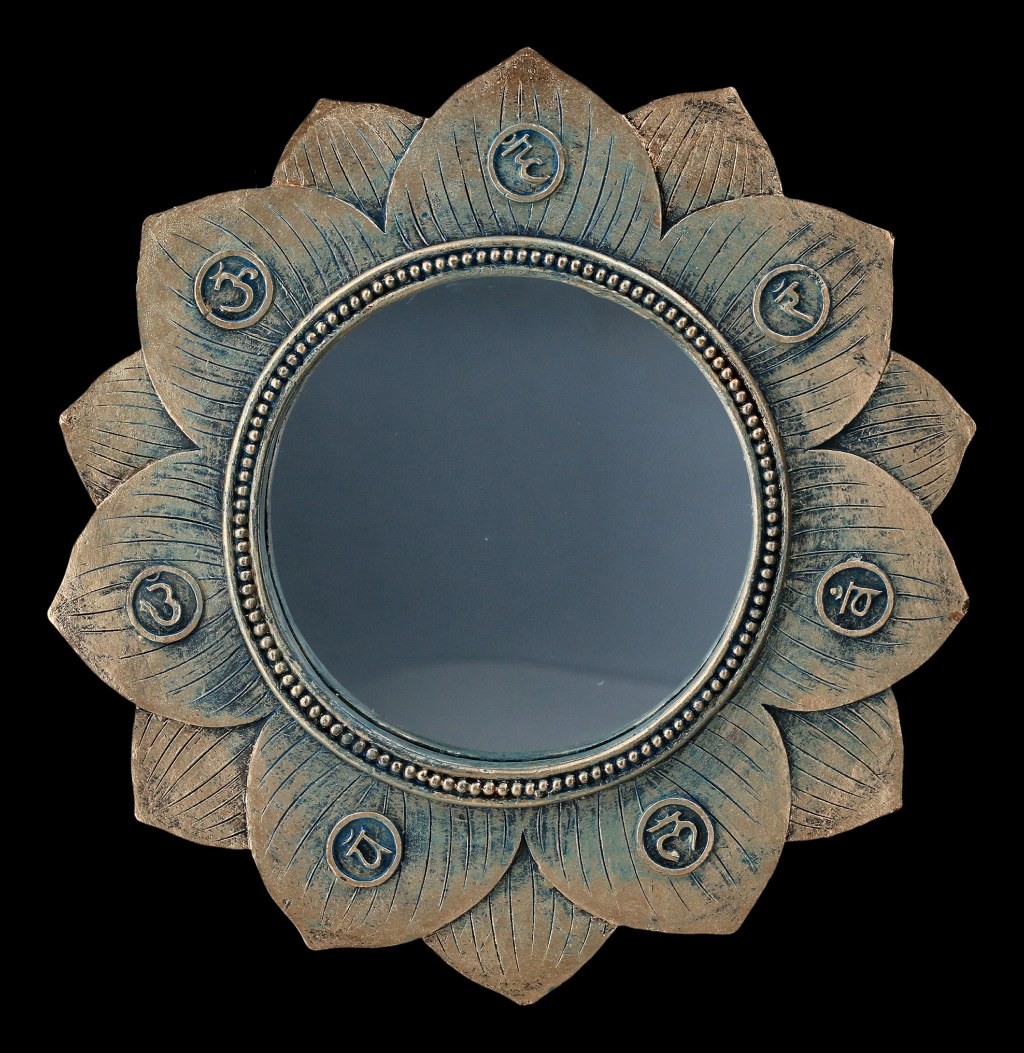Discover The Enchanting Beauty Of The Lotus Mirror: Unveiling The Perfect Reflection And Captivating Elegance!
Lotus Mirror: A Majestic Beauty in the World of Nature
Greetings, Good Peoples! Today, we are going to delve into the enchanting world of the lotus mirror. This exquisite flower, also known as the sacred lotus, is revered for its mesmerizing beauty and cultural significance. In this article, we will explore the various aspects of the lotus mirror, from its origins to its symbolism, and uncover why it continues to captivate people from all around the globe. So, sit back, relax, and immerse yourself in the awe-inspiring world of the lotus mirror.
Introduction
The lotus mirror, scientifically known as Nelumbo nucifera, is a perennial aquatic plant that belongs to the family Nelumbonaceae. Native to Asia, this stunning flower can be found in various countries, including India, China, and Thailand. It thrives in shallow, murky waters, and its large leaves float elegantly on the surface, creating a picturesque scene. Despite its delicate appearance, the lotus mirror is known for its resilience, as it can survive in diverse climates and harsh conditions.
The lotus mirror holds immense cultural significance in many Asian countries. In Buddhism, it symbolizes purity and enlightenment, as it emerges from the muddy waters and blossoms into a pristine flower. Its ability to rise above adversity and remain untainted by its surroundings serves as a profound metaphor for human growth and spiritual awakening. Moreover, the lotus mirror is often depicted in ancient art and literature, further highlighting its importance in these cultures.
This extraordinary flower has also captured the attention of scientists and researchers due to its unique properties. The lotus mirror possesses self-cleaning abilities, thanks to tiny nanostructures on its petals that repel dirt and water. This natural phenomenon, known as the Lotus Effect, has fascinated experts in various fields, leading to the development of innovative technologies inspired by the lotus mirror’s characteristics.

3 Picture Gallery: Discover The Enchanting Beauty Of The Lotus Mirror: Unveiling The Perfect Reflection And Captivating Elegance!



Image Source: media-amazon.com
When it comes to aesthetics, the lotus mirror is undeniably breathtaking. Its large, elegant flowers boast vibrant colors, ranging from pure white to shades of pink and yellow. The petals are arranged in layers, creating a mesmerizing effect that adds to its allure. The lotus mirror’s beauty has made it a popular subject for photographers, artists, and poets, who seek to capture its essence and convey its ethereal charm to the world.
In the next sections, we will explore the various aspects of the lotus mirror in greater detail. From its origin and historical significance to its symbolic meaning and ecological role, we will provide you with a comprehensive understanding of this magnificent flower. So, let’s dive deeper into the world of the lotus mirror.
Lotus Mirror: What You Need to Know
The lotus mirror, also known as the sacred lotus, is a magnificent flower with a rich cultural history. It has captivated people around the world with its beauty and symbolism. In this section, we will explore the key aspects of the lotus mirror, including its origins, physical characteristics, and cultural significance.
Origins of the Lotus Mirror

Image Source: figuren-shop.de
The lotus mirror is native to Asia, specifically the Indian subcontinent. It is believed to have originated in India, where it holds great cultural and religious importance. From there, it spread to other parts of Asia, including China, Japan, and Thailand. Today, the lotus mirror can be found in various countries, with each region adding its own unique touch to its symbolism and significance.
Physical Characteristics
The lotus mirror is a perennial aquatic plant that grows in shallow, muddy waters. Its large leaves float on the surface, creating a striking visual display. The flowers of the lotus mirror are the main attraction, with their vibrant colors and intricate petal arrangement. The petals are usually white, but they can also be pink or yellow. The flowers are supported by long stalks that emerge from the water, adding to their majestic appearance.
Cultural Significance

Image Source: media-amazon.com
The lotus mirror holds great cultural and religious significance in many Asian countries. In Buddhism, it is considered a sacred flower that symbolizes purity and spiritual enlightenment. The lotus mirror’s ability to emerge from murky waters and blossom into a beautiful flower represents the journey from darkness to light, from ignorance to wisdom. Its pristine petals are believed to represent the purity of the Buddha’s teachings.
Symbolism and Meaning
The lotus mirror is often associated with various symbolic meanings. In addition to purity and enlightenment, it also represents rebirth, detachment, and resilience. The fact that the lotus mirror can grow and bloom in unfavorable conditions symbolizes the human ability to overcome challenges and thrive in the face of adversity. It serves as a reminder to stay grounded and find inner peace amidst the chaos of life.
Ecological Role
The lotus mirror plays a crucial role in its ecosystem. Its large leaves provide shade and shelter for aquatic life, while its flowers attract bees and other pollinators. The lotus mirror also helps in maintaining water quality by absorbing excess nutrients and filtering the water. Its presence in lakes, ponds, and marshes contributes to the overall health and balance of the ecosystem.
Cultivation and Uses
The lotus mirror is not only admired for its beauty but also cultivated for various purposes. Its seeds are edible and are often used in traditional Asian cuisine. The flowers are used in religious ceremonies and are also a popular ingredient in herbal medicine. Additionally, the lotus mirror is a beloved ornamental plant that adds a touch of elegance to gardens and water features.
Who Can Benefit from the Lotus Mirror?
The lotus mirror’s mesmerizing beauty and cultural significance make it a source of inspiration and joy for people from all walks of life. Whether you are an artist seeking inspiration, a spiritual seeker on a journey of self-discovery, or simply a nature lover who appreciates the wonders of the natural world, the lotus mirror has something to offer. Its symbolism and aesthetic appeal can bring a sense of tranquility and harmony to your life.
Artists and Creatives
The lotus mirror’s exquisite beauty has long been a muse for artists around the world. Its elegant form and vibrant colors make it a captivating subject for painters, photographers, and sculptors. The lotus mirror’s symbolism and cultural significance can also add depth and meaning to artistic creations. Whether you are looking to capture its grace on canvas or incorporate its essence into your designs, the lotus mirror is sure to inspire your creative endeavors.
Spiritual Seekers
The lotus mirror’s association with purity, enlightenment, and spiritual growth makes it a powerful symbol for those on a spiritual path. Its ability to rise above the murky waters and blossom into a pristine flower serves as a reminder of the human potential for transformation and awakening. Meditating on the lotus mirror can help cultivate inner peace, clarity, and a deeper connection with oneself and the universe. Its presence in sacred spaces and temples further enhances its spiritual significance.
Nature Enthusiasts
For nature enthusiasts, the lotus mirror offers a chance to immerse themselves in the wonders of the natural world. Observing its growth cycle, from the emergence of leaves to the blooming of flowers, can be a truly magical experience. The lotus mirror’s ecological role in supporting aquatic life and maintaining water quality adds to its appeal for those passionate about environmental conservation. Spending time in the presence of the lotus mirror can bring a sense of serenity and appreciation for the beauty of nature.
When and Where to Find the Lotus Mirror
The lotus mirror can be found in various parts of Asia, particularly in countries with a tropical or subtropical climate. It thrives in shallow, freshwater habitats such as lakes, ponds, and marshes. The best time to see the lotus mirror in full bloom varies depending on the location and climate. In general, it tends to bloom during the summer months, between June and August. However, some species may bloom earlier or later in the year. If you are planning to witness the breathtaking beauty of the lotus mirror, make sure to research the specific location and its blooming season beforehand.
Why the Lotus Mirror Continues to Fascinate
The lotus mirror’s enduring appeal can be attributed to several factors. Its stunning beauty, cultural significance, and unique properties make it a captivating subject of interest for people around the world. Here are some reasons why the lotus mirror continues to fascinate and inspire awe.
Aesthetic Beauty
The lotus mirror’s large, elegant flowers, with their vibrant colors and intricate petal arrangement, make it a sight to behold. Its visual appeal is further enhanced by its contrasting presence in muddy waters. The lotus mirror’s ability to thrive and bloom amidst unfavorable conditions adds to its allure and captivates the hearts of all who witness its beauty.
Cultural Significance
The lotus mirror’s symbolism in various cultures, particularly in Buddhism, gives it a profound meaning and significance. Its association with purity, enlightenment, and spiritual growth resonates with people seeking inner peace and wisdom. The lotus mirror’s role in religious ceremonies and its depiction in ancient art and literature further adds to its cultural importance.
Symbolic Meaning
The lotus mirror’s symbolism of rebirth, resilience, and detachment strikes a chord with people facing challenges and seeking personal growth. Its ability to rise above adversity and remain untainted by its surroundings serves as a powerful metaphor for the human spirit. The lotus mirror reminds us to stay rooted in our true selves amid the chaos of life and find strength in our journey towards self-discovery.
Scientific Fascination
The lotus mirror’s self-cleaning abilities and unique nanostructures on its petals have captured the attention of scientists and researchers. The Lotus Effect, as it is called, has inspired the development of innovative technologies in various fields, including self-cleaning surfaces, water-repellent coatings, and biomimicry in engineering. The lotus mirror’s natural phenomenon continues to inspire advancements in science and contribute to sustainable solutions.
How to Appreciate the Lotus Mirror’s Beauty
There are several ways to fully appreciate the beauty and symbolism of the lotus mirror. Whether you encounter it in its natural habitat or admire its depiction in art and literature, here are some ways to immerse yourself in the enchanting world of the lotus mirror.
Visit Lotus Mirror Gardens
Many countries, especially those with a rich cultural heritage, have dedicated gardens and parks where lotus mirrors are cultivated and showcased. Visiting these gardens provides a unique opportunity to witness the breathtaking beauty of the lotus mirror up close. You can stroll through the serene surroundings, observe the flowers in various stages of their growth, and learn more about their cultural significance. These gardens often offer guided tours and educational programs to enhance your experience.
Explore Art and Literature
The lotus mirror has been a subject of inspiration for artists and writers throughout history. Exploring artworks, poems, and literature that feature the lotus mirror can deepen your understanding of its symbolism and aesthetic appeal. Museums, galleries, and libraries often have collections that showcase the creativity and interpretation surrounding the lotus mirror. Engaging with these artistic expressions can evoke a sense of wonder and spark your own imagination.
Practice Meditation and Mindfulness
The lotus mirror’s association with spirituality and enlightenment makes it a perfect focal point for meditation and mindfulness practices. Find a quiet and peaceful spot, preferably near water, and sit in a comfortable position. Allow your gaze to rest on the lotus mirror, observing its form, colors, and textures. As you deepen your breath and let go of distractions, let the lotus mirror’s symbolism guide you towards inner stillness and tranquility. Embrace the present moment and allow the beauty of the lotus mirror to inspire clarity and peace within you.
Pros and Cons of the Lotus Mirror
Like any other natural phenomenon, the lotus mirror has its own set of advantages and disadvantages. Understanding these aspects can help us appreciate its beauty while also acknowledging the potential challenges and limitations it presents.
Advantages of the Lotus Mirror
– Aesthetic Beauty: The lotus mirror’s stunning flowers and elegant form make it a visual delight and a popular subject for artistic expression. Its vibrant colors and intricate petal arrangement add to its allure and captivate the hearts of all who encounter it.
– Cultural Significance: The lotus mirror holds immense cultural and religious significance in many Asian countries. Its symbolism of purity, enlightenment, and spiritual growth resonates with people seeking inner peace and wisdom. It is often associated with sacred spaces and rituals, adding a sense of reverence and tranquility to these environments.
– Ecological Role: The lotus mirror plays a vital role in maintaining the health and balance of aquatic ecosystems. Its large leaves provide shade and shelter for aquatic life, while its flowers attract pollinators and contribute to biodiversity. The lotus mirror’s ability to absorb excess nutrients and filter water helps in maintaining water quality.
Disadvantages of the Lotus Mirror
– Invasive Potential: In some regions, the lotus mirror has been categorized as an invasive species due to its rapid growth and ability to outcompete native plants. When introduced into non-native habitats, it can disrupt the balance of ecosystems and pose a threat to local biodiversity. Therefore, caution should be exercised when cultivating the lotus mirror in certain areas.
– Maintenance
This post topic: Mirror



